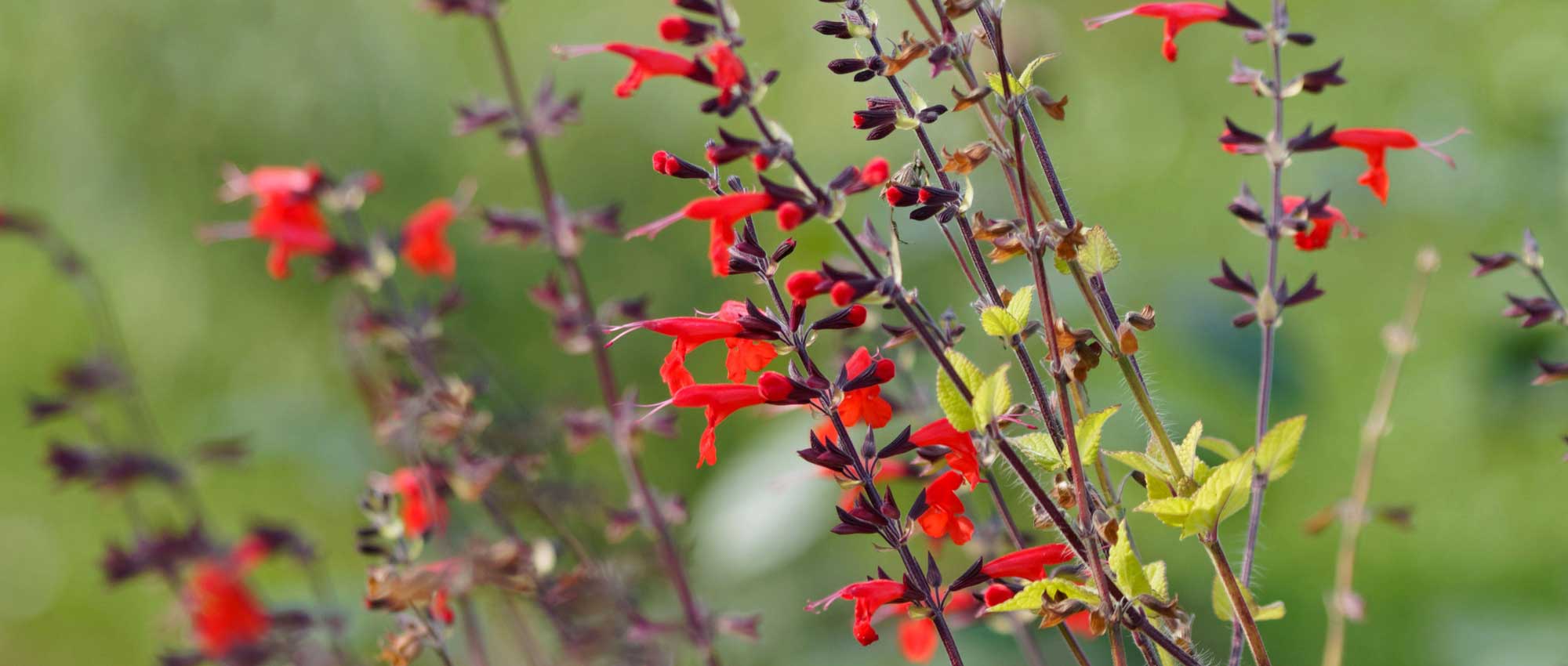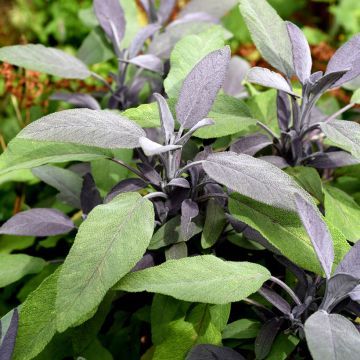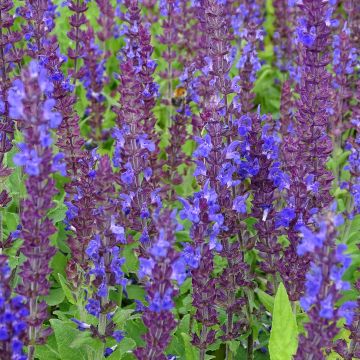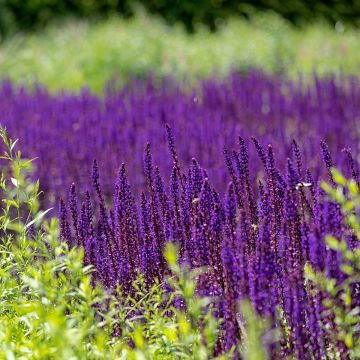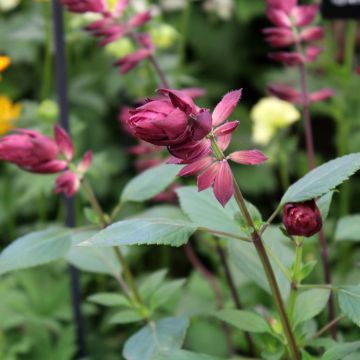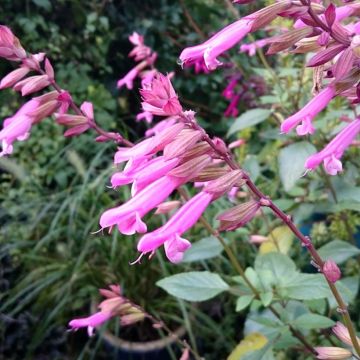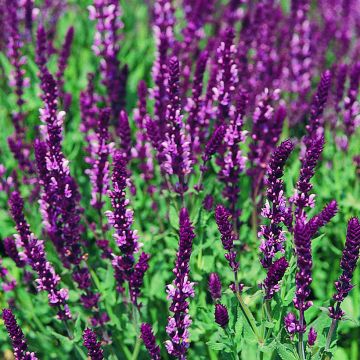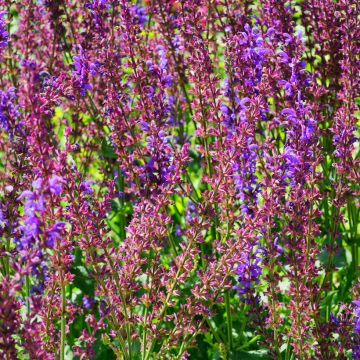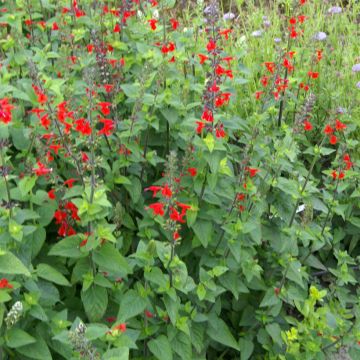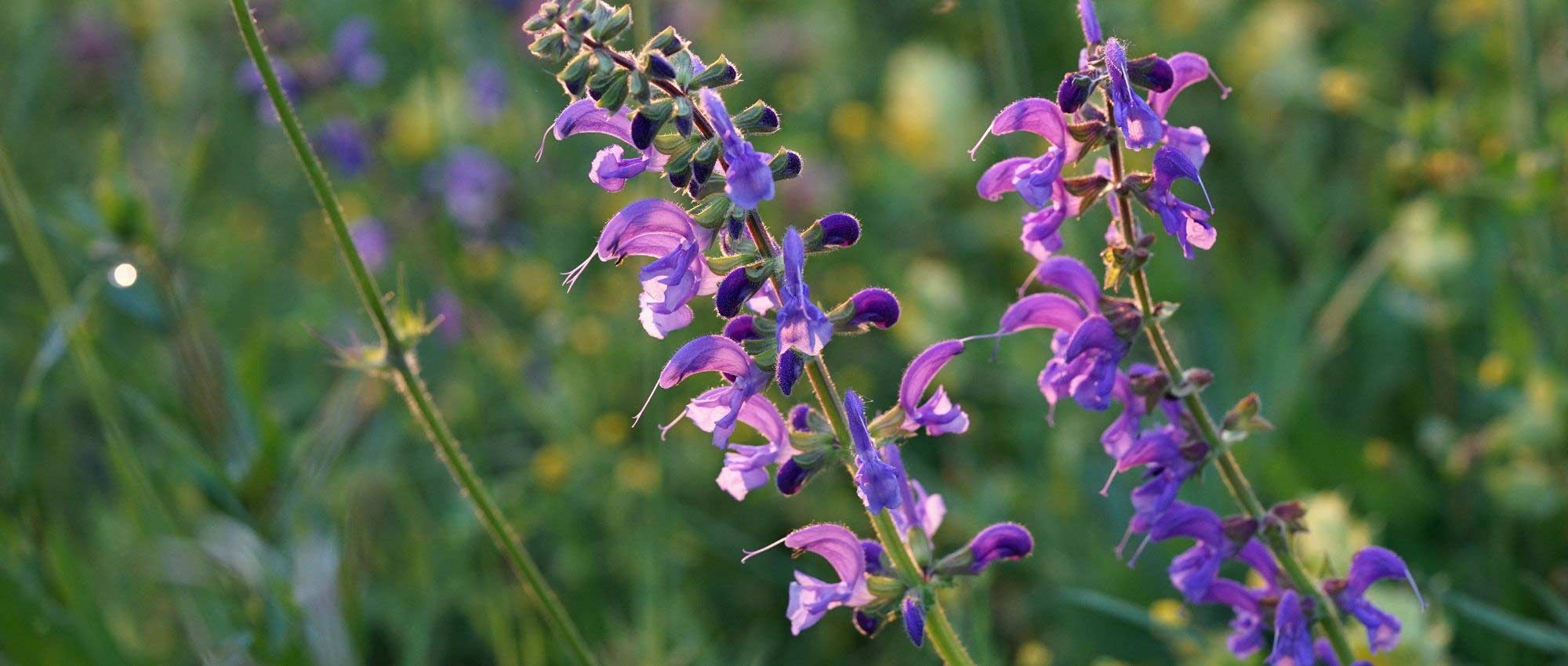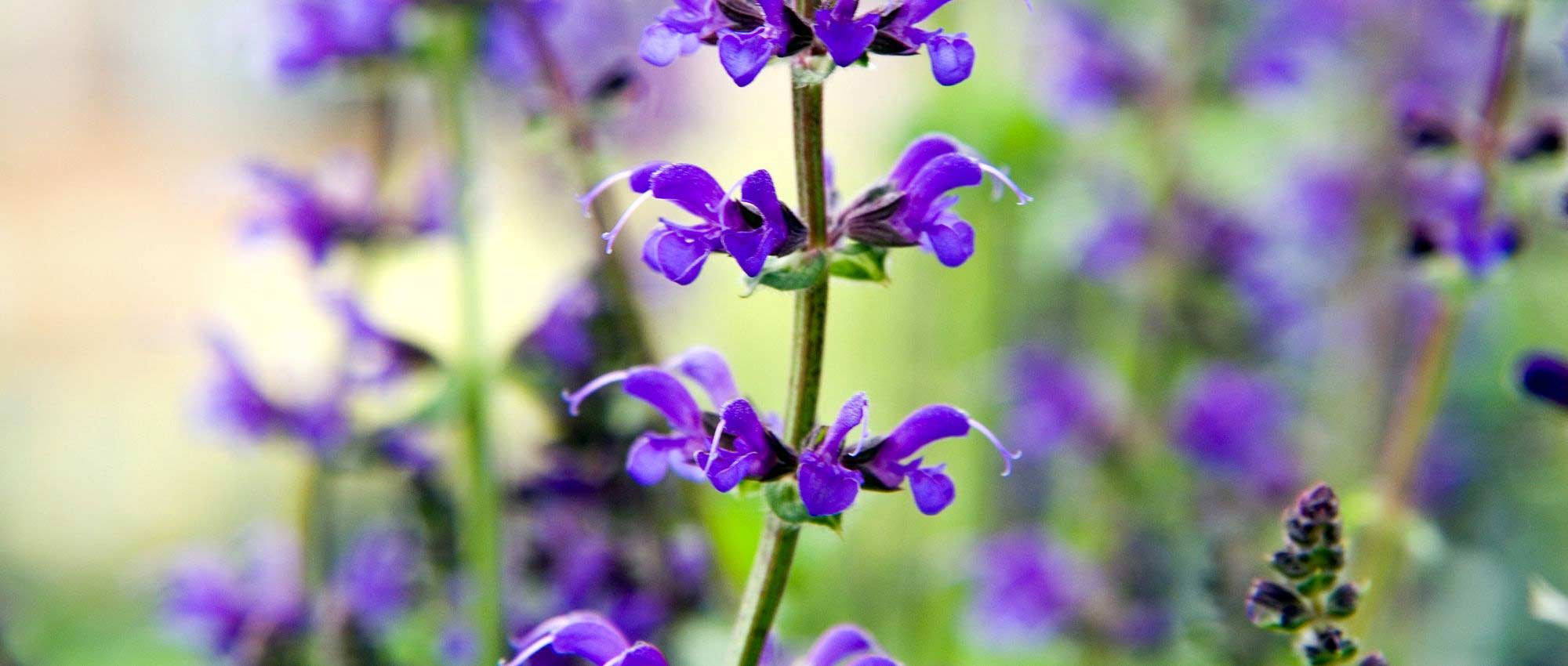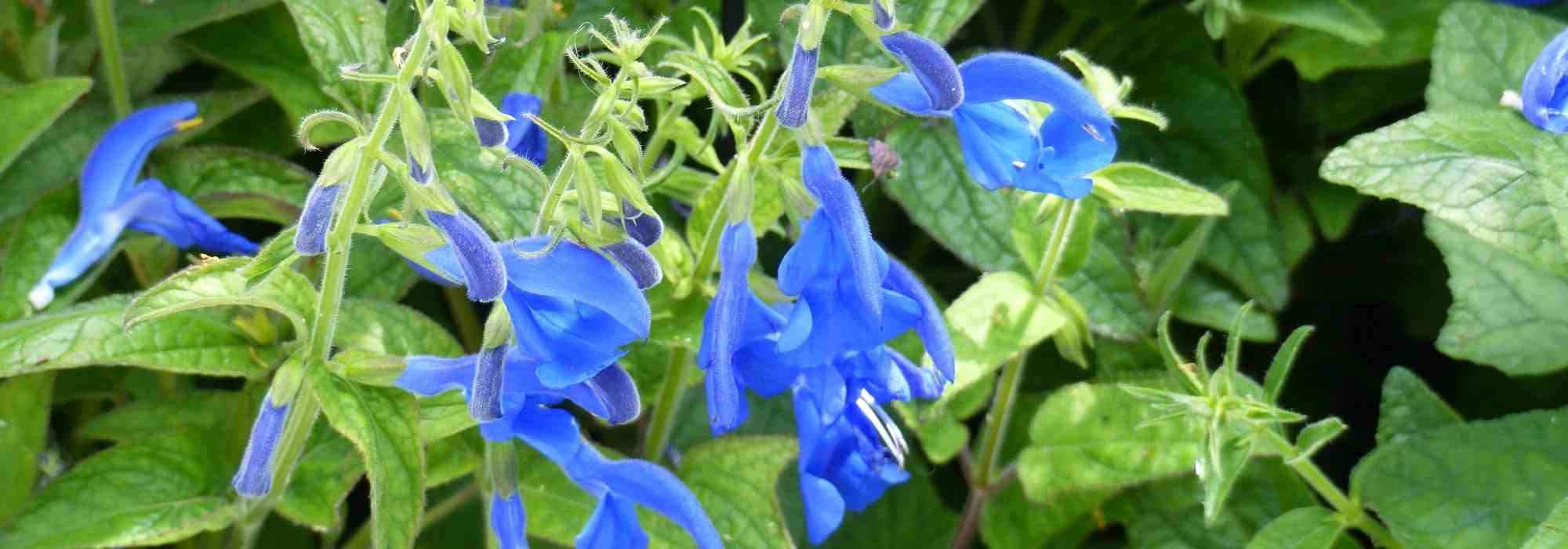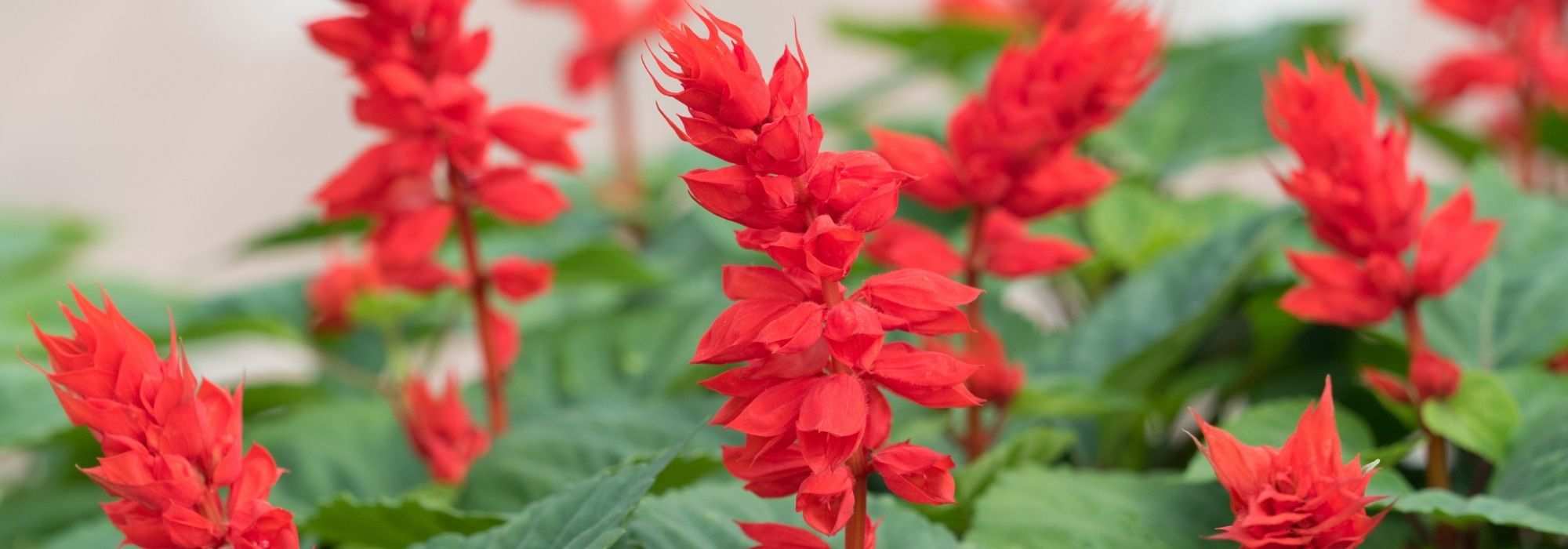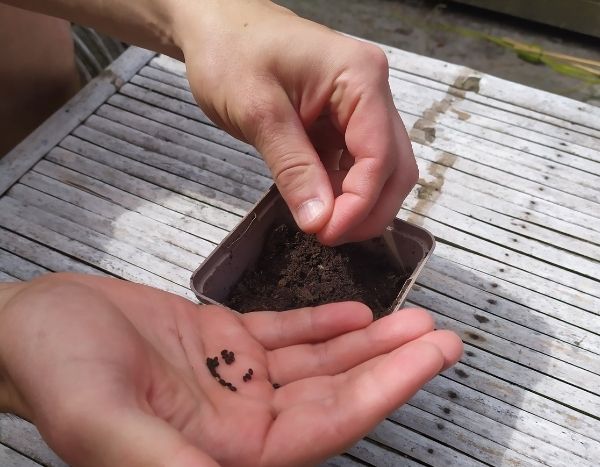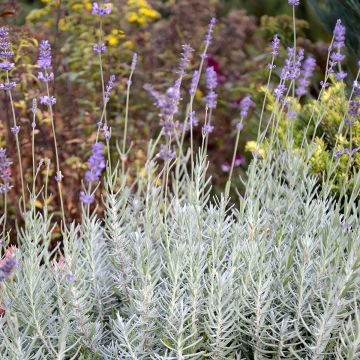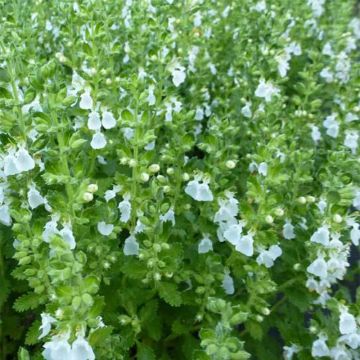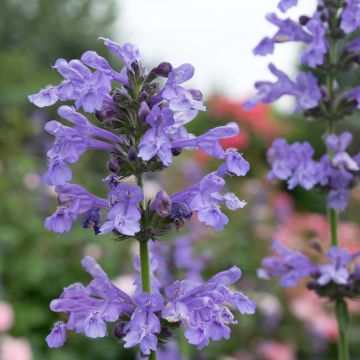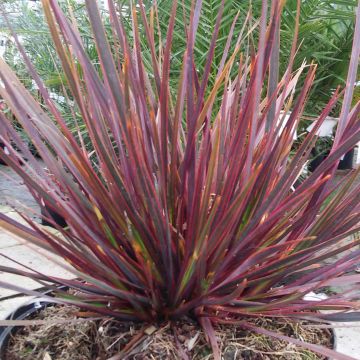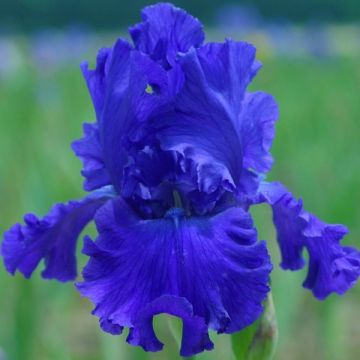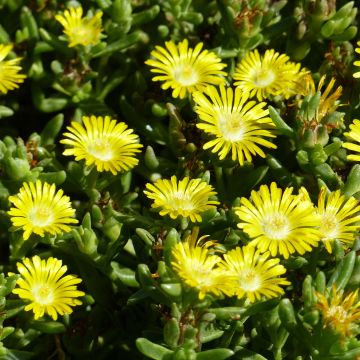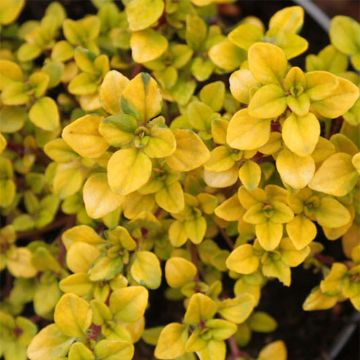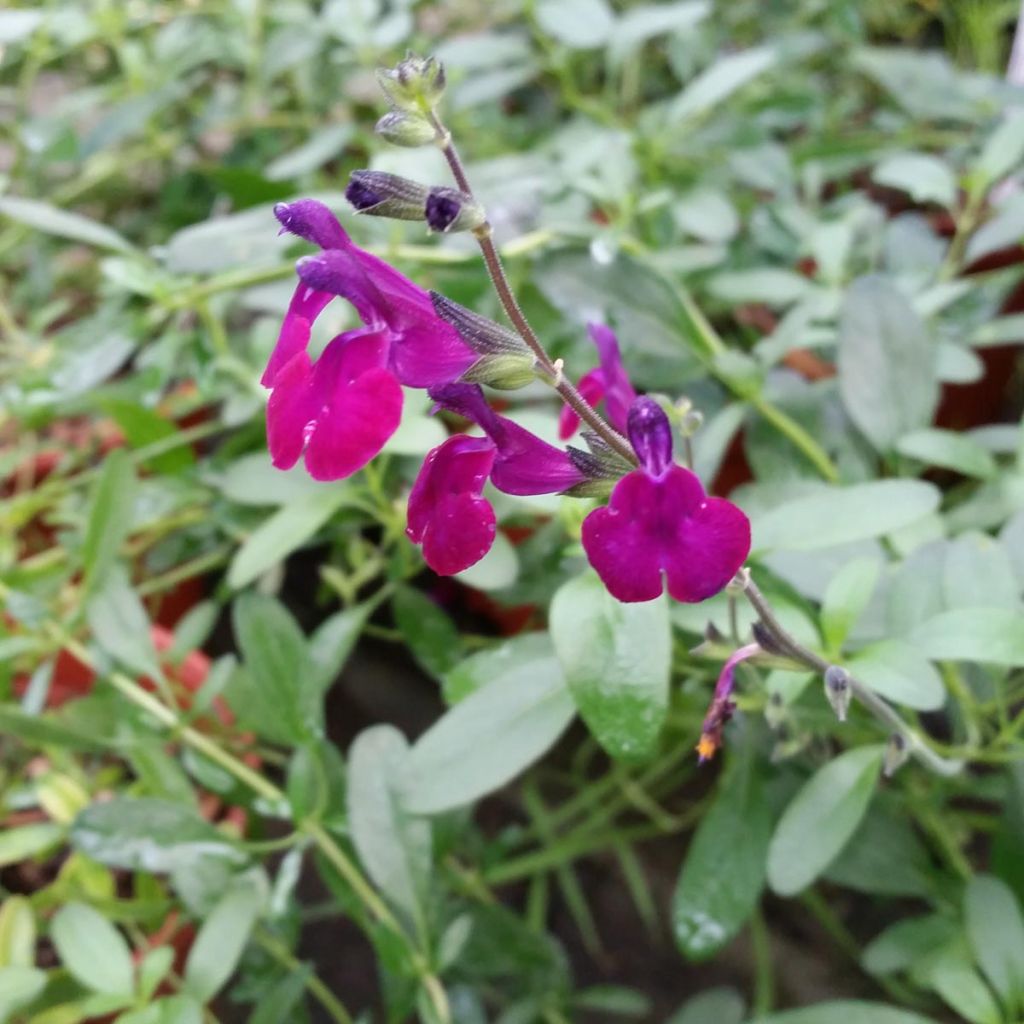

Salvia jamensis Violette de Loire
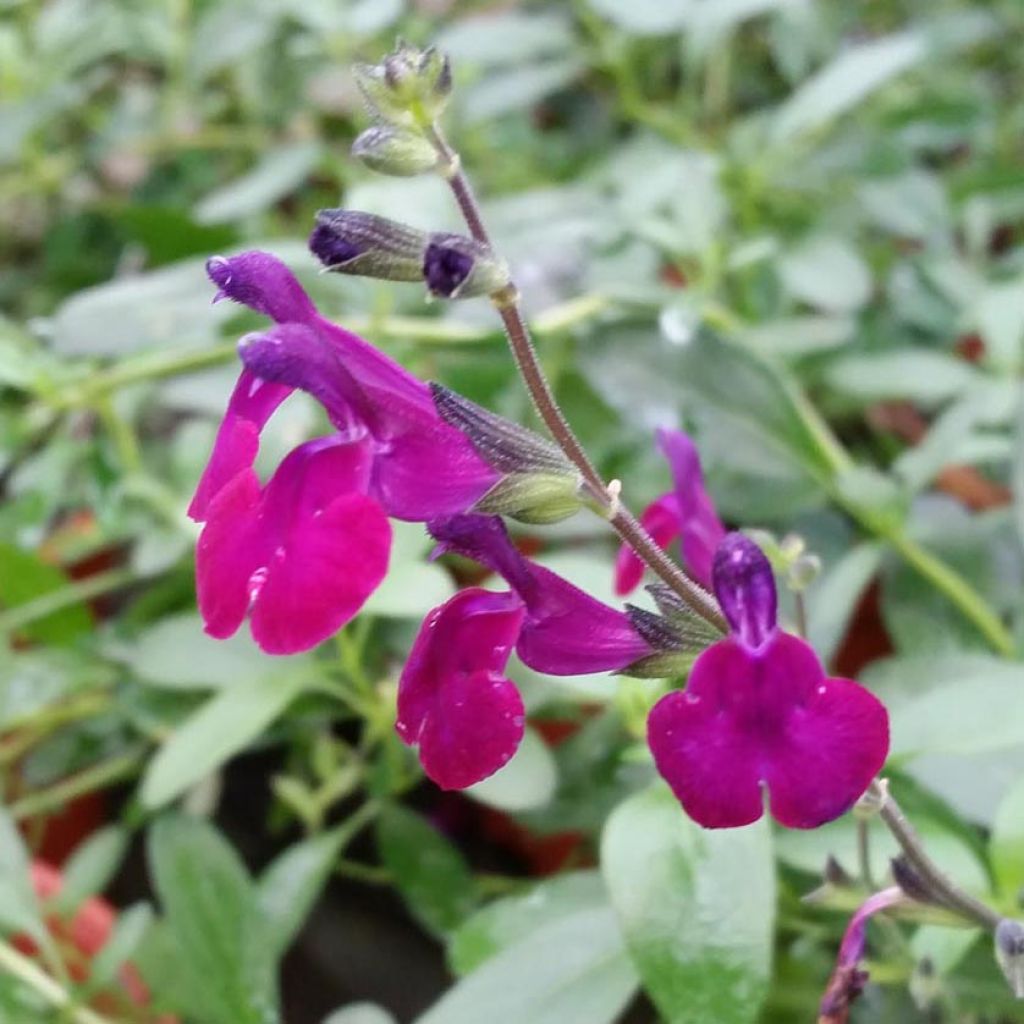

Salvia jamensis Violette de Loire
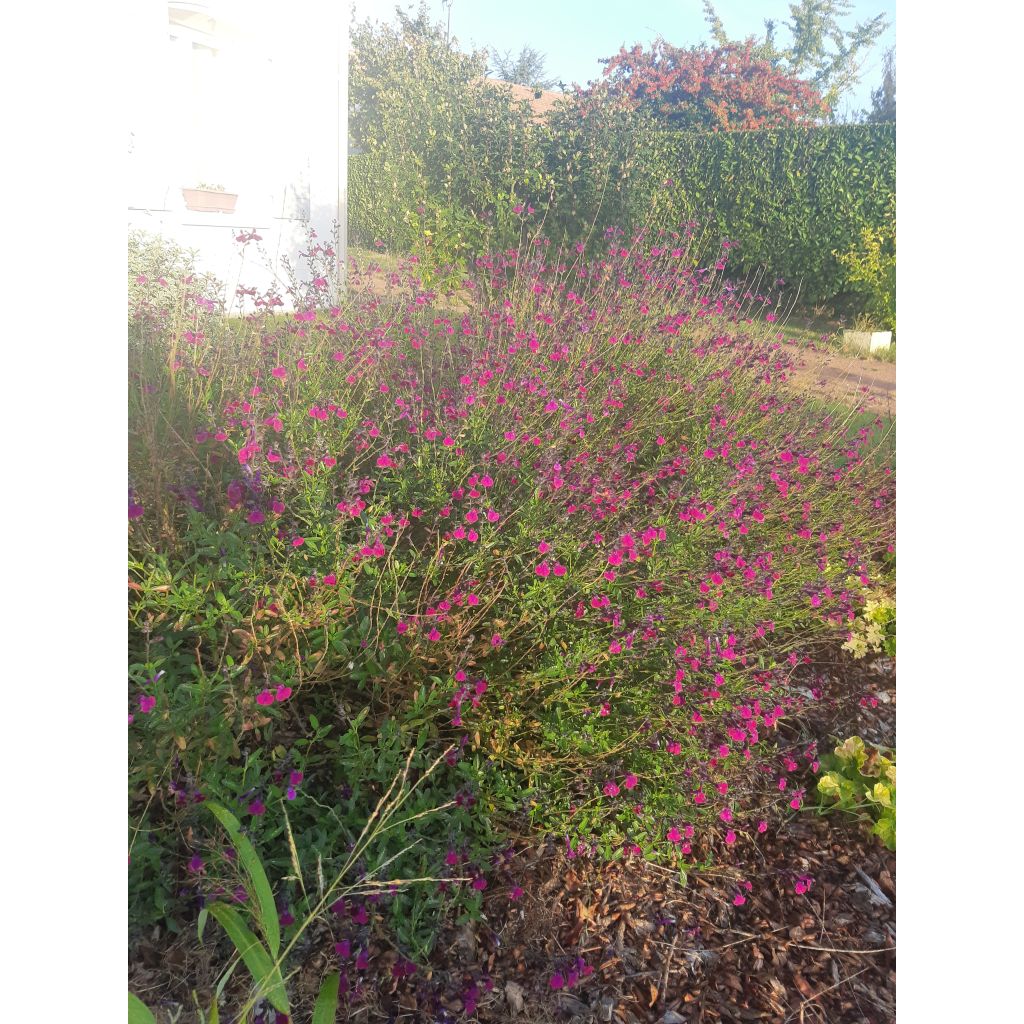

Salvia jamensis Violette de Loire
Salvia jamensis Violette de Loire
Salvia x jamensis Violette de Loire® 'Barsal'
Sage
It survived the heatwaves It blooms very beautifully, true to the lovely photos
Ludivine, 17/09/2025
Special offer!
Receive a €20 voucher for any order over €90 (excluding delivery costs, credit notes, and plastic-free options)!
1- Add your favorite plants to your cart.
2- Once you have reached €90, confirm your order (you can even choose the delivery date!).
3- As soon as your order is shipped, you will receive an email containing your voucher code, valid for 3 months (90 days).
Your voucher is unique and can only be used once, for any order with a minimum value of €20, excluding delivery costs.
Can be combined with other current offers, non-divisible and non-refundable.
Home or relay delivery (depending on size and destination)
Schedule delivery date,
and select date in basket
This plant carries a 12 months recovery warranty
More information
We guarantee the quality of our plants for a full growing cycle, and will replace at our expense any plant that fails to recover under normal climatic and planting conditions.

Would this plant suit my garden?
Set up your Plantfit profile →
Description
Salvia x jamensis 'Violette de Loire'® is a recent hybrid from France. It is a semi-evergreen plant with a pleasant aroma that produces small deep violet flowers with bluish reflections in spring and, even more generously in September, arranged in spikes. The autumn light enhances the beauty of the flowers, making them appear like a stained glass window. Despite being moderately hardy, this shrub is robust and can thrive in well-drained soil, even in poor conditions. It grows well in sunny and partially shaded locations and can even be grown in containers.
Salvia x jamensis 'Violette de Loire' is a perennial shrub that belongs to the Lamiaceae or labiates family. It has a bushy and spreading habit and is wider than tall. It can grow up to 50 cm (19.7 in) in height and 60 cm (23.6 in) in diameter. The plant produces nectar-rich flowers, attractive to bees that are particularly abundant in autumn, from September to November, as long as the cold weather does not damage them. The flowers emerge from the foliage and are grouped in spikes. They measure up to 2 cm (0.8 in) in length and are a beautiful, intense blue-violet, with a bluish reflection when backlit. Each flower lasts only a day, falling to the ground in the evening, but new ones will bloom the following day. The semi-evergreen foliage comprises small oval, dark green, aromatic leaves that are a bit sticky and release a strong acidic-scented essential oil when heated. The leaves measure from 1 to 2 cm in length.
This plant will bloom alongside rock roses, rosemary, and bellflowers in spring. However, its pairing with autumn asters is stunning. You can opt for those that can thrive with minimal care, such as Aster laevis, Aster turbinellus or Aster amellus. It will create a delightful display with gauras, tall sedums (Sedum 'Matrona'), and shrubby potentillas.
Salvia jamensis Violette de Loire in pictures


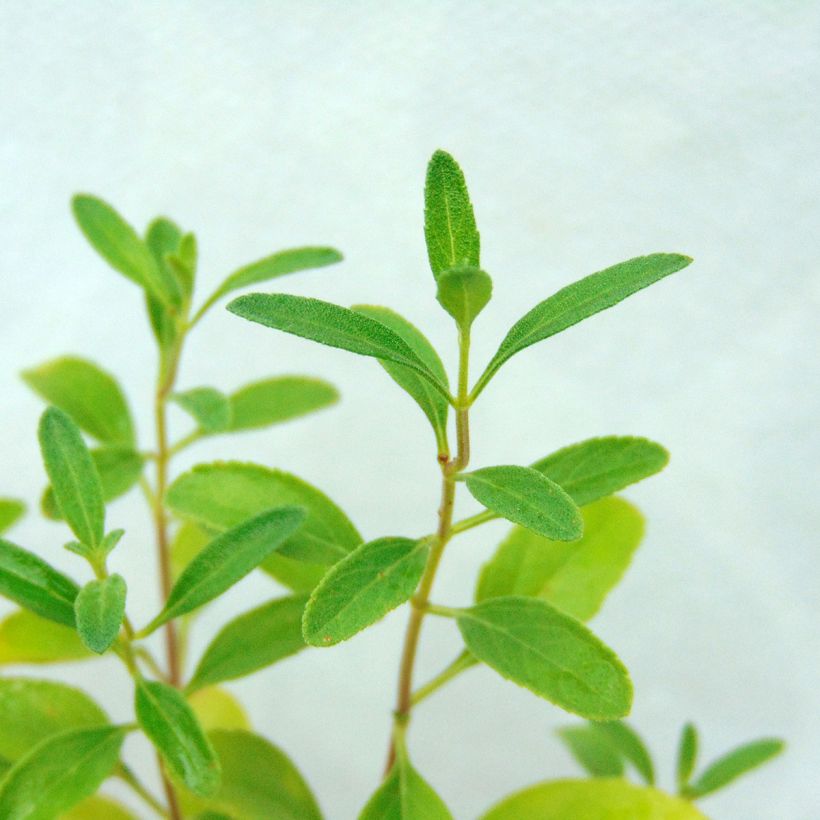

Flowering
Foliage
Plant habit
Botanical data
Salvia
x jamensis
Violette de Loire® 'Barsal'
Lamiaceae
Sage
Cultivar or hybrid
Other Salvia - Sage
View all →Planting and care
To grow Salvia x jamensis 'Violet of Loire', wait until after spring frosts in cold climates, or plant it in September-October in warmer temperatures. Choose a light, porous, and rocky soil that is good enough to support the plant's flowering. This plant thrives in well-sunny situations or partial shade and needs regular watering in autumn and spring to flower abundantly. Mix in some well-decomposed compost or leaf soil if the soil is poor. During winter, mulch the plant in colder areas and protect it from the cold as much as possible. To ensure its survival through winter, plant it in the warmest corner of the garden, in full sun against a south-facing wall, or on a rocky or sandy slope. Use any substrate that does not retain moisture, which can be fatal for the plant in winter. Salvia x jamensis 'Violette de Loire' tolerates pot cultivation wonderfully, making it an excellent choice for gardeners in warmer climates who need to store it.
Planting period
Intended location
Care
Planting & care advice
-
, onOrder confirmed
Reply from on Promesse de fleurs
Similar products
Haven't found what you were looking for?
Hardiness is the lowest winter temperature a plant can endure without suffering serious damage or even dying. However, hardiness is affected by location (a sheltered area, such as a patio), protection (winter cover) and soil type (hardiness is improved by well-drained soil).

Photo Sharing Terms & Conditions
In order to encourage gardeners to interact and share their experiences, Promesse de fleurs offers various media enabling content to be uploaded onto its Site - in particular via the ‘Photo sharing’ module.
The User agrees to refrain from:
- Posting any content that is illegal, prejudicial, insulting, racist, inciteful to hatred, revisionist, contrary to public decency, that infringes on privacy or on the privacy rights of third parties, in particular the publicity rights of persons and goods, intellectual property rights, or the right to privacy.
- Submitting content on behalf of a third party;
- Impersonate the identity of a third party and/or publish any personal information about a third party;
In general, the User undertakes to refrain from any unethical behaviour.
All Content (in particular text, comments, files, images, photos, videos, creative works, etc.), which may be subject to property or intellectual property rights, image or other private rights, shall remain the property of the User, subject to the limited rights granted by the terms of the licence granted by Promesse de fleurs as stated below. Users are at liberty to publish or not to publish such Content on the Site, notably via the ‘Photo Sharing’ facility, and accept that this Content shall be made public and freely accessible, notably on the Internet.
Users further acknowledge, undertake to have ,and guarantee that they hold all necessary rights and permissions to publish such material on the Site, in particular with regard to the legislation in force pertaining to any privacy, property, intellectual property, image, or contractual rights, or rights of any other nature. By publishing such Content on the Site, Users acknowledge accepting full liability as publishers of the Content within the meaning of the law, and grant Promesse de fleurs, free of charge, an inclusive, worldwide licence for the said Content for the entire duration of its publication, including all reproduction, representation, up/downloading, displaying, performing, transmission, and storage rights.
Users also grant permission for their name to be linked to the Content and accept that this link may not always be made available.
By engaging in posting material, Users consent to their Content becoming automatically accessible on the Internet, in particular on other sites and/or blogs and/or web pages of the Promesse de fleurs site, including in particular social pages and the Promesse de fleurs catalogue.
Users may secure the removal of entrusted content free of charge by issuing a simple request via our contact form.
The flowering period indicated on our website applies to countries and regions located in USDA zone 8 (France, the United Kingdom, Ireland, the Netherlands, etc.)
It will vary according to where you live:
- In zones 9 to 10 (Italy, Spain, Greece, etc.), flowering will occur about 2 to 4 weeks earlier.
- In zones 6 to 7 (Germany, Poland, Slovenia, and lower mountainous regions), flowering will be delayed by 2 to 3 weeks.
- In zone 5 (Central Europe, Scandinavia), blooming will be delayed by 3 to 5 weeks.
In temperate climates, pruning of spring-flowering shrubs (forsythia, spireas, etc.) should be done just after flowering.
Pruning of summer-flowering shrubs (Indian Lilac, Perovskia, etc.) can be done in winter or spring.
In cold regions as well as with frost-sensitive plants, avoid pruning too early when severe frosts may still occur.
The planting period indicated on our website applies to countries and regions located in USDA zone 8 (France, United Kingdom, Ireland, Netherlands).
It will vary according to where you live:
- In Mediterranean zones (Marseille, Madrid, Milan, etc.), autumn and winter are the best planting periods.
- In continental zones (Strasbourg, Munich, Vienna, etc.), delay planting by 2 to 3 weeks in spring and bring it forward by 2 to 4 weeks in autumn.
- In mountainous regions (the Alps, Pyrenees, Carpathians, etc.), it is best to plant in late spring (May-June) or late summer (August-September).
The harvesting period indicated on our website applies to countries and regions in USDA zone 8 (France, England, Ireland, the Netherlands).
In colder areas (Scandinavia, Poland, Austria...) fruit and vegetable harvests are likely to be delayed by 3-4 weeks.
In warmer areas (Italy, Spain, Greece, etc.), harvesting will probably take place earlier, depending on weather conditions.
The sowing periods indicated on our website apply to countries and regions within USDA Zone 8 (France, UK, Ireland, Netherlands).
In colder areas (Scandinavia, Poland, Austria...), delay any outdoor sowing by 3-4 weeks, or sow under glass.
In warmer climes (Italy, Spain, Greece, etc.), bring outdoor sowing forward by a few weeks.






























